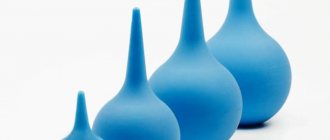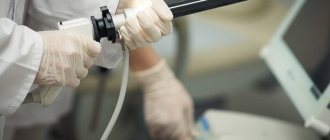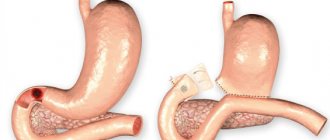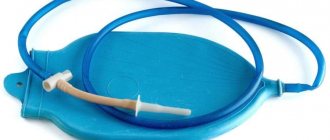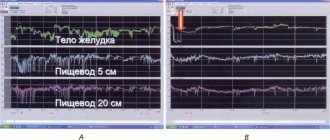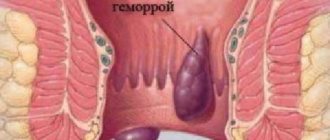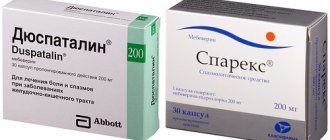The device of Esmarch's mug
The well-known medical instrument, the Esmarch mug, is designed for water cleansing of the intestines and the introduction of medicinal drugs into it in liquid form.
The device consists of a rubber or plastic bag (heating pad) with an outlet tube, up to 2 m long, attached at one end. This tube is attached to a container at one end, and at the other is equipped with a tip for insertion into the anus.
The capacity of the product can vary from 1 to 2 liters . A graduated scale can be applied to one of the surfaces of the Esmarch mug, with which you can calculate the required volume of liquid to be used. Mugs are available for single or multiple use. Thanks to its convenience and functional perfection, the device proposed by Esmarch remains today in virtually unchanged form.
Application
Enemas vary in their purpose and serve different purposes. In medical practice they are prescribed :
- to cleanse the intestines before surgery or medical examination;
- as therapeutic and cleansing procedures for constipation;
- for intestinal slagging;
- for weight loss;
- to relieve the inflammatory process;
- in complex nutrition in cases of poisoning;
- and other options.
The advantage of using a mug to cleanse the intestines is the simple principle of operation, ease of use, the possibility of using liquids of different compositions for treatment procedures, as well as simple control of the amount of the drug administered and the speed of its entry into the intestines. In addition, the procedure carried out in this way is quite effective.
How to do an Esmarch enema
In a hospital, a cleansing enema is administered by medical personnel. But this procedure is quite simple and can be done independently. The venue can be a bed, which should first be covered with oilcloth, or a bathroom.
The algorithm for making an enema with an Esmarch mug at home is as follows:
- First, you need to pour the cleaning solution into the container.
- Then you need to release the air from the tube and close the tap again.
- Hang the container so that it is located above the patient and secure it.
- For easier insertion, the tip is lubricated with oil, cream or Vaseline.
- The position for administering the enema can be any: fetal position, squatting, knee-elbow. The main thing is to be comfortable.
- Next, carefully and carefully insert the tip into the anus and open the tap. The speed and amount of liquid can be adjusted using a tap.
- For a one-time procedure, you should use no more than 2 liters. liquids.
- You should not try to pour in more than what the intestines accept. Then you should remove the tip and hold the liquid in for a while so that it has a healing effect. If you have a strong urge to defecate, you can go to the toilet. For bedridden patients, a duck will be required.
If a non-disposable system is used, then it is completely washed, the tip is boiled and the entire system is folded until the next use.
You can watch a visual video:
Contraindications
Not all patients are suitable for treatment with an Esmarch mug. There are also limitations to using an enema, including:
- inflammatory processes in the anus, occurring in an acute form;
- tumors;
- rectal cancer;
- haemorrhoids;
- stomach upsets;
- renal failure;
- acute colitis;
- stomach ulcer;
- stomach and intestinal bleeding;
- period of exacerbation of chronic diseases;
- period after strokes and heart attacks.
Using an enema to correct bowel function is a simple, reliable way to solve problems. But you should not get carried away with the procedure, as this is fraught with complications. It is correct to limit yourself only to doctor’s prescriptions so that the medicine does not turn out to be a source of new problems.
The human body is a well-coordinated mechanism that works like a clock. But sometimes it happens that this mechanism fails, and the problem lies in the clogging of the internal space. This is especially true for the intestines. The occurrence of constipation causes many negative side effects. To get rid of toxins and constipation, they use a cleansing method - an enema. The problem is so delicate that you don’t always want to go to the doctors. Today, there are various devices that allow you to carry out this procedure yourself at home.
What is an enema? This is the process of introducing solutions into the rectum: water, medications, herbal decoctions, oils. In this case, special devices are used to successfully complete the procedure.
This method of cleansing the body is used for various purposes. This means that both the process and the solutions administered internally are different.
Indications for the procedure:
- The process of preparing a patient for intestinal surgery.
- Cleansing the rectum and colon in women before and after childbirth.
- Preparation for ultrasound examination, colonoscopy, anoscopy.
- If you are concerned about a long absence of bowel movements, characterized by regularity.
- Lack of effect from laxatives or for cleaning the lower intestines in an emergency.
- It is useful to perform an enema for overweight women, the goal is to lose weight.
- If you need to introduce medications into the body. The intestines contain the largest concentration of blood vessels, which ensures the fastest absorption of medications.
An enema is especially relevant for atonic constipation, which occurs against the background of poor nutrition, low mobility, and impaired water balance.
Using Esmarch's mug in alternative medicine
Alternative medicine often emphasizes the importance of detoxification for optimal health and comfort.
Detoxification is any procedure in which harmful toxins are removed from the body, and an enema is considered one such option.
Unfortunately, it is not a fact that these dangerous substances, which should be eliminated from the body, accumulate. Additionally, there is no scientific basis to suggest that all disease conditions are the result of a buildup of toxins, and procedures such as colon cleanses have not been proven to flush out the body. For various reasons, the procedure using the Esmarch mug to cleanse the colon remains a subject of criticism in the scientific community.
The use of enemas in alternative medicine to stimulate the intestines has been known since ancient Egypt. Its first clinical use was first recorded in a medical text from the 16th century BC. called "Papyrus Ebers". Esmarch's mugs were recognized in the Western world as a medicine after the discovery that germs cause infections.
The idea that waste in the colon leads to disease throughout the body dates back to the mid-1880s by the history of medicine professor James Wharton. This happened when bacteriologists discovered that intestinal bacteria convert protein residues in feces into toxic compounds. It was believed that it was they that entered the bloodstream and led to dangerous diseases. As a result of these speculations, the theory of self-poisoning from one's own intestines arose, and colon cleansing is believed to be a medicinal method.
Researchers now have a different understanding of how the human body works, and it is now believed that the so-called “toxins” in our intestines are not the cause of disease. However, enemas have been clinically proven to be helpful in some cases, including:
- for constipation;
- with prostatitis;
- in the absence of a reaction to a laxative;
- with prolonged absence of bowel movements (a week or more);
- during colonoscopy.
Enemas can relieve constipation when the bowel does not respond to laxatives and other treatments. The Esmarch mug is also used before a colonoscopy procedure.
The manipulation is performed by introducing a saline solution into the colon through the rectum using a device for this specific purpose. This type of enema was previously prescribed to women before childbirth, but today doctors do not consider it necessary.
Despite all the shortcomings, in medical practice there are cases when enemas can really help, for example, with constipation or before various procedures. Esmarch's mug helps remove waste from the body, but this does not mean the colon is inherently dirty.
Medical experts agree that the intestine is a self-cleaning organ whose health depends on the balance of bacteria and fungi naturally present in the colon.
Cleansing can actually eliminate some of the good bacteria from the colon and interfere with normal digestion and fermentation of undigested food.
Carrying out at home
A cleansing enema at home is used for urgent and quick self-help by the patient. This is not as easy as it might seem at first glance. The process is complex; preliminary preparation for the enema and the use of special devices are necessary.
Devices for the procedure
To properly carry out the colon cleansing procedure, you need a container that will contain a cleaning liquid, a hose for supplying the solution, a tip inserted into the rectum, and a clamp. This is what a device used for an enema without a bulb looks like.
Another device - a syringe or a large medical bulb - is also used for cleaning. The dimensions of the equipment are selected individually. Before use, the syringe must be thoroughly sterilized.
Esmarch's mug requires preliminary preparation before use:
- First of all, you need to attach a tip with a hose to the container (it can be rubber or plastic), the clamp blocks the flow.
- The next step is to place the device at a height of at least one and a half meters. This is necessary so that the liquid enters the intestines under pressure. The fastening must be reliable so that the bowl does not fall, and the placement must be convenient for administering an enema.
- The container is installed and can be filled with the required liquid. The tip is lubricated with Vaseline or other fat for easy entry into the rectum.
- The air is pre-bleeded from the tube. To do this, open the clamp slightly and wait for the water to flow.
Pros and cons of the procedure
The cleansing effect of an enema is not scientifically substantiated and is the subject of debate, although there are many adherents of the cleansing qualities of the procedure. For example, there is a claim that a coffee enema can increase energy levels, improve mental performance and mood, and help cope with depression and sluggishness. In addition to the benefits of an enema, it promotes weight loss by removing excess undigested waste from the colon.
Despite the benefits, this procedure is not without its own risks, especially when done at home and without professional supervision. For example, enemas can sometimes lead to a number of unpleasant side effects, such as:
- nausea;
- vomit;
- diarrhea;
- washing out beneficial intestinal microflora;
- damage to internal organs.
In addition, the manipulation itself can damage the rectum and other internal organs. While a one-time enema is unlikely to cause much harm, frequent procedures increase the risk of interfering with the body's natural absorption of nutrients.
Some people may become dependent on the procedure and will have to deal with lazy bowel syndrome in the future. Regular enema use can also lead to a condition called hyponatremia, or water poisoning, which is an imbalance of electrolytes.
Types of enemas
There are different types of procedures (therapeutic, cleansing, preventive), suitable for different purposes:
- Purification process. The intestines are washed before surgery, examination or to combat constipation. The injected liquid is not absorbed by the walls of the organ.
- Therapeutic process. A drug is injected into the organ to ensure its rapid absorption into the bloodstream. As a rule, the volume of the drug is small. The drug enters the bloodstream within 30 minutes.
- Siphon procedure. If the intestines are heavily contaminated with toxins and other poisonous substances, a deeper cleansing is required. This effect is difficult to achieve with a regular mug, so a siphon process is used. To do this you need 20 liters of clean warm water. The rules are complex, so the manipulation is carried out in a hospital setting and is part of the nursing responsibilities. The patient is placed on his side. The tip of the tube must be lubricated and inserted into the anus to a depth of 30 centimeters. The container first rises one and a half meters, the liquid is poured into the intestines until it fills it. Then it is lowered into an empty bucket, and the water flows back out. Repeat the manipulation again. They do this until 20 liters are gone.
- Oxygen process. The procedure does not involve the introduction of a liquid solution, but air cleaning. This is an effective remedy in the fight against worms and other parasites living inside. High concentrations of oxygen have a detrimental effect on internal enemies.
- Ognev's enema. The need for this type of manipulation arises when the large intestine is paralyzed, atony of the muscular system of the organ walls develops, and it is necessary to quickly empty the intestines. Hydrogen peroxide with glycerin and soap solution is introduced as a solution. Due to the strong irritant effect, frequent use is not recommended, and only as an exception if other methods have not helped.
- Using glycerin and soap. This cleansing enema helps improve the motor activity of the intestinal tract and acts as a laxative. The use of the procedure is allowed in cases of severe forms of absence of bowel movements.
Disinfecting mugs
Disinfection of Esmarch's mug is necessary even if it is used by only one person. During storage, drops of liquid may remain in the tank, which creates an environment favorable for pathogenic microflora.
Reusable enemas are sterilized twice - after use and before you start working with them again. The parts separated from each other must first be washed with running water, then doused with boiling water, treated with a weak solution of manganese, or soaked in a soap solution for 5–7 minutes. It is acceptable to wipe twice with a cotton swab soaked in chlorhexidine. The bowl should be stored at a temperature no higher than 27 °C and no closer than a meter from the batteries. The number of uses of a reusable mug is determined by its condition: cracked fragments indicate that its service life has expired.
If an enema is performed in a hospital setting, disposable ones are more often used. They do not require any preparation, you just need to open the package. In some departments, however, reusable options are still used today. To sterilize them, use a 3% solution of hydrogen peroxide.
The Esmarch Cup is a simple and reliable medical device that is easy to use independently after prior consultation with a doctor. It is easy to care for, and its effectiveness in emergency situations is very high. Therefore, experts recommend having it in your home medicine cabinet.
When not to do an enema
The benefits of colon cleansing are invaluable, but if you do not follow the recommendations, you will only end up harming the body. There are contraindications for this procedure:
- Presence of internal bleeding in the rectum.
- Development of inflammation in the intestinal canal.
- Tumor formations in the organ.
- Peptic ulcer.
- Hemorrhoids with blood.
- Cracks in the anus.
- Contraindications for women: pregnancy.
- Crohn's disease.
- Inflammatory process in the vermiform appendix of the cecum.
- Severe dysfunction of the cardiovascular system.
Esmarch's mug and the human body
So, Esmarch's mug is a container that can be hung at a certain height (approximately 1.5 m from the floor or 75 cm from the patient's body). The solution from the container through a connecting tube (157 cm long) under the influence of gravity without additional effort or action enters the rectum or vagina. At the end of the tube in front of the tip there is a tap that allows you to carry out the procedure yourself. There are different tips - for children and adults, for giving enemas and for irrigating the vagina.
Previously, a mug was just that: a mug - a metal container with divisions. Today it is a silicone or rubber container, which can be of different sizes:
Actions after the procedure
By cleaning the intestinal tract with enemas, toxins, harmful substances and parasites are eliminated. Beneficial bacteria also leave along with the contents. As a result, dysbiosis develops, the body is weakened, which leads to the occurrence of other diseases. Therefore, immediately after the enema, you need to restore normal bowel function.
A decoction of medicinal herbs is used as a supporting agent: chamomile, yarrow and peppermint. Drink for 10 days. You also need to take activated carbon, after dissolving the tablets in a glass of still mineral water. The abdominal area is massaged clockwise every day. Move more, be in the fresh air.
What can be used to restore microflora:
- Flax seed. The ground plant is mixed with vegetable oil and taken in a tablespoon for 10 days. Do not take if you have pancreatitis, gallbladder disease, or hepatitis.
- Herbal infusion. There are two types of medicine. The first consists of chamomile, St. John's wort, nettle and wormwood. You should not drink if you have high blood pressure, the presence of cysts, tumors and other formations, atherosclerosis, or if you are pregnant. The second method consists of eating plantain and calamus. It is strictly forbidden to use for those who suffer from stomach disease, when the production of secretions is excessive.
- Oatmeal. After crushing the flakes, put them in a thermos and pour boiling water over them. The infusion is prepared within 4 hours. Take before meals for 3 weeks. Helps soothe the mucous layer.
How to do an enema without a bulb?
If you don’t have a bulb with a tip for giving an enema, you can quickly cleanse the intestines using improvised means. A longer method of cleaning without rinsing with water is to follow dietary recommendations, use laxative drugs, folk remedies, mainly herbal.
Do-it-yourself enema from scrap materials
At home, using available materials, you can replace Esmarch’s pear or mug. The main condition is that the finished product must be clean, which is necessary to prevent human infection during the procedure. It is also important to ensure that there are no sharp edges, in particular on the homemade tip, which is inserted through the anus into the lumen of the rectum.
Making an Esmarch mug
To make an Esmarch mug, you will need a plastic bottle with a volume of 1-1.5 liters, a rubber hose or silicone tube with a diameter of 0.5 cm, a length of about 1.5 m, a clamp or clothespin and 2 ballpoint pens, one of which serves as a tip. Manufacturing includes several stages:
- The bottom of the bottle is cut off.
- A hole is made in the lid the same size as the handle.
- Remove the rod from the pen and remove the cap.
- The handle is inserted tightly into the hole in the cap, which is then screwed onto the bottle.
- A hose or silicone tube is placed on the tip of the handle.
- Place another ballpoint pen without a refill or cap on the free end of the tube.
Important! As a locking mechanism, place a clamp or clothespin on the tube or hose in a convenient place.
Before administering an enema using a manufactured Esmarch mug, the tip of the pen, which is used as a tip, is lubricated with petroleum jelly or fat. The procedure is carried out with the help of an assistant.
Pear from a plastic bottle
If there is no pharmacy bulb for an enema, then replacement is done using improvised means, for which you will need:
- Plastic dishes - a soft bottle with a volume of 0.5-1 liter is suitable.
- A ballpoint pen that is used as a tip.
- Vaseline or tallow.
A small hole is made in the bottle cap. The writing rod is removed from the ballpoint pen and then inserted into the hole in the lid without a cap. The bottle is filled with water or another solution for a cleansing enema, a cap with a handle is screwed on, the tip of which is lubricated with Vaseline or fat. After preparatory measures, in a lying position on the left side (legs should be bent at the knee and hip joints), for adults, the tip of the pen is inserted into the rectal cavity to a depth of 5-10 cm, after which the bottle is slowly squeezed. In this case, the contents enter the cavity of the lower gastrointestinal tract.
Shower hose
An option for colon lavage is the use of a shower hose. To do this, first unscrew the watering can, and put a tip on it, which is lubricated with Vaseline. There is an imminent danger in using a shower hose as a means of colon cleansing. To avoid complications and negative consequences, it is very important to adjust the low pressure of the water supply, as well as its temperature. Doctors do not recommend using this remedy, as there have been cases of rupture of the walls of the colon and thermal burns.
Cleansing and fasting
Therapeutic fasting is often complemented by colon cleansing. An Esmarch mug is placed to help the patient’s body remove accumulated metabolic products during fasting, since sometimes natural blood flow and intestinal motility cannot cope with this. To help activate peristalsis during fasting, you need to walk and exercise more often, then an enema may not be necessary. If a person is healthy and leads an active lifestyle, then during the period of therapeutic fasting he will not need an enema. The body of such a person is sufficiently trained and will be able to work normally in such stressful conditions for the body.
How can you replace an enema at home?
Doing an enema at home is in most cases used to empty the bowels for constipation. In order to normalize stool and prevent the accumulation of dense feces in the lower parts of the gastrointestinal tract, the following measures and means can be used:
- dietary recommendations;
- medications;
- folk remedies.
Important! Before using medications and folk remedies, you should consult your doctor.
Food and dishes
Dietary recommendations are the basis for the normal functioning of the digestive system and stool formation. Following a diet includes taking certain foods, dishes made from them, as well as several features:
- Limiting fatty, fried foods (fatty meat), spices, marinades, spicy foods, alcohol.
- The diet should be dominated by plant foods (a source of fiber and vitamins), lean meat, fish, and dairy products.
- All dishes are steamed, they can be boiled, and stewing is allowed.
- Fractional meals - food is taken in small portions, but at least 5 times a day. This allows you to “unload” the digestive system, as well as ensure the normal formation and excretion of feces.
- The last meal is no later than 2 hours before expected sleep. At night, the stomach, intestines, and digestive glands should also rest.
- Sufficient fluid intake - at least 1.5 liters of water should enter the body with food and drinks during the day. Otherwise, the stool becomes dense, which provokes the development of constipation.
To increase effectiveness, dietary recommendations are recommended to be combined with increased physical activity. In the morning, it is advisable to do exercises for 10-15 minutes, and during the day, walk for half an hour in the fresh air.
Pharmacy drugs
To combat constipation, laxatives are used, which can be purchased in pharmacies, these include:
- tablets with senna herb;
- magnesia;
- Duphalac;
- Bisacodyl;
- Guttalax.
To individually select the optimal drug, it is advisable to consult a doctor.
Folk remedies
Folk remedies for normalizing stool are represented by medicinal plants. The most popular are:
- Castor oil - drink 2 tablespoons of the product at night before going to bed; loose stools usually appear in the morning.
- Potato juice – 30 ml of juice is added to the same volume of clean water, taken orally 3 times a day.
- Sauerkraut juice - 0.5 cups, drink 2 times a day before breakfast and dinner.
- Beetroot juice - take 2 tablespoons orally 3 times a day.
Important! It is advisable to select a folk remedy and the scheme for its use after consultation with a doctor. If there is no laxative effect, stop taking it and seek qualified help.
Cautions
A homemade enema is not the best option for colon cleansing. During use, mechanical damage to the tissues of the anus and rectum, thermal burns, and excessive stretching of the intestinal walls, even to the point of rupture, cannot be ruled out. Some of the complications pose a direct threat to human life, therefore, unless absolutely necessary, it is not recommended to use an enema from improvised means.
In order to avoid the need for an enema to facilitate bowel movements and cleanse the intestines during constipation, it is recommended to carry out preventive measures. They allow you to normalize stool and include a rational diet and physical activity.
Positive and negative sides
Despite the fact that some doctors question the results of an enema, many people note the positive effect of this procedure. Depending on the type of solution, you can get different results - cleansing the intestines, treatment, getting rid of excess weight and others.
However, this procedure can lead to negative consequences if carried out constantly and thoughtlessly. Often, enemas cause nausea, vomiting, prolonged diarrhea and even damage to internal organs. If the procedure is performed incorrectly, rectal injuries are possible. Lack of control and constant repetition of such treatment can provoke the leaching of beneficial substances and disruption of the intestinal microflora.
Getting used to an enema becomes especially dangerous - the intestines stop working on their own, cleansing is possible only with the help of the procedure. Constant use of water can also lead to so-called water poisoning, when the balance of electrolytes in the body is disrupted.

